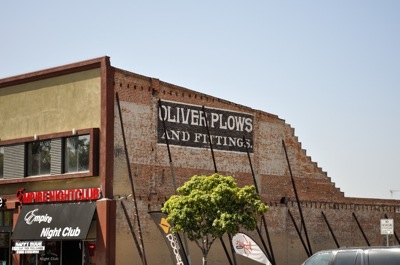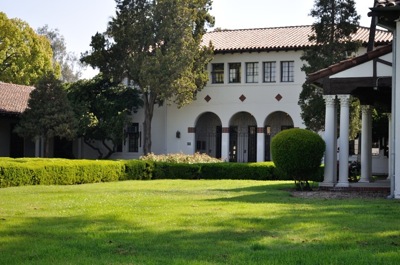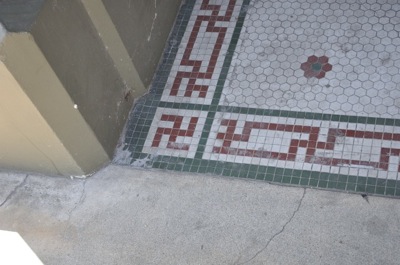
I went on a walking tour of old Downtown Ontario yesterday. The tour was interesting and I was honestly surprised at how many of the buildings from the 1800s were still standing.
Granted many of those buildings look a lot different today from when they were built. However, according to the tour leader in many cases the original architectural details of these buildings were simply covered by updated “more modern” facades.
The cool part of this tour was the “field guides” these were booklets that had photos of the buildings we were looking at through the years.
Two things were obvious from these guides, first and foremost, these buildings were and are really interesting and in some cases grand. Secondarily, the tour guide who’d put these field guides together had love and passion for the subject.
I was impressed by his knowledge and that he was involved in helping the city preserve and renovate many of these historic buildings.
It was also a beautiful spring day in Ontario and just walking around the old section of town was very nice despite the morons driving up & down Euclid who thought it appropriate to scream obscenities as they drove by.
No-one in my group noticed the gang member with his pants down below his butt flashing gang signs as he approached a group of similarly attired people.
I’ll admit that until it was obvious these people were part of the same gang, I did scope out the nearest cover.
During the tour I was unconsciously keeping track of distance to the nearest object of substance, (walls, stone monuments, culverts, etc). That’s not to say that Ontario is a crime ridden city, but a certain gang element was obvious and the best way to survive a gun fight is not to get shot…
My brother would call it “situational awareness”, my über liberal friends would call it paranoia. I call it common sense. The trick to being situationally aware is to let it be a sub process in your mind but not to let the need to be aware overwhelm enjoyment of the moment.

As we wandered around the buildings many of which were being preserved and earthquake retrofitted with public money I was thinking of the simpler times in which these buildings had been constructed. Some of the structures were WPA projects.
Characteristic of many of the WPA era buildings are the somewhat ornate touches. Things like tile inlays in the entryways. Little details in the woodworking inside public buildings like courthouses and city/county public buildings. Since the WPA ran from 1935 to 1943 these buildings reflect the style and sensibilities of the 30s.
As the tour guide pointed out these buildings wouldn’t be built today.

The tour ended at a building that was undergoing renovations. This particular building was constructed in the early 1900s. Typical of the era it had high ceilings and ornate tin / copper ceiling coverings. During the renovation workers had uncovered some of the tilework that marked the original entranceways.
The person that had laid the tile was working on a border pattern and honestly, I think it didn’t work out quite as he’d envisioned it would.
As you can see in the first picture the pattern is a repeating pattern that’s somewhat reminescent of Greek / Roman patterns that appear on buildings throughout America.

The problem is what do you do when you get to the corners?
The unknown artisan in question chose a pretty straightforward approach, with mixed results.
The corner details are what caught my attention.
No, those are not Nazi swastikas in the corners. The legs go the other direction for the Nazi version.
Nazi or not, it doesn’t matter because in the 1900s when this building was built there was no such thing as Nazism.
There were Eastern religions where this symbol and it’s mirror had significance, usually in the context of peace and contemplation.

The point is, without context, if you didn’t know that this building predated the rise of the Nazi party by almost 40 years you could easily think something really bad about the owners of the building, or the people that did business in the building.
Here’s a link to people that really try much too hard to find evil where none intentionally existed.
Thankfully the tour group I was with yesterday said very little. It was interesting since the closest thing to comment was “What year was this building built?”
The tour guide answered “early 1900s” and that was the end of the matter.
The sad thing about the age we live in is that people are always looking for insult where none exists.
I won’t be terribly surprised if when the building opens again there isn’t some news coverage describing the “Racist” symbols that were preserved with taxpayers money.
I’d recommend waking tours of your towns if offered, you’ll learn things about your home that will surprise you.
